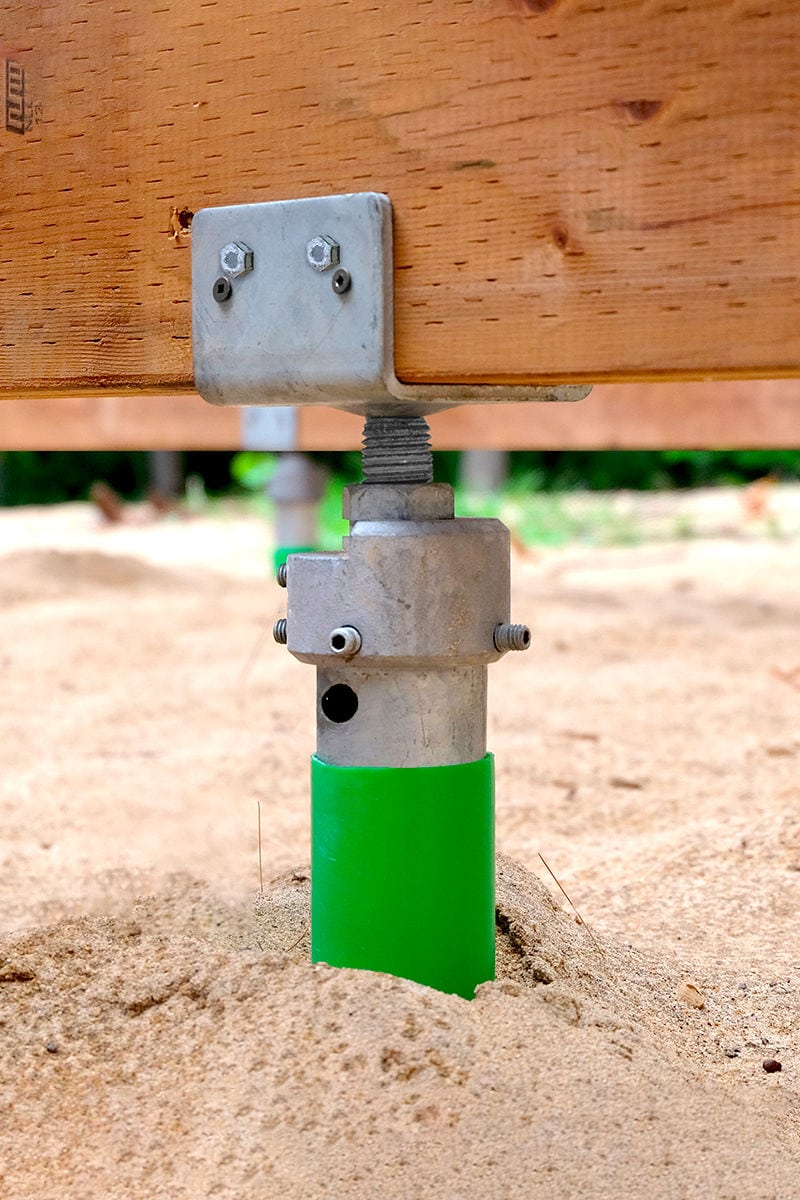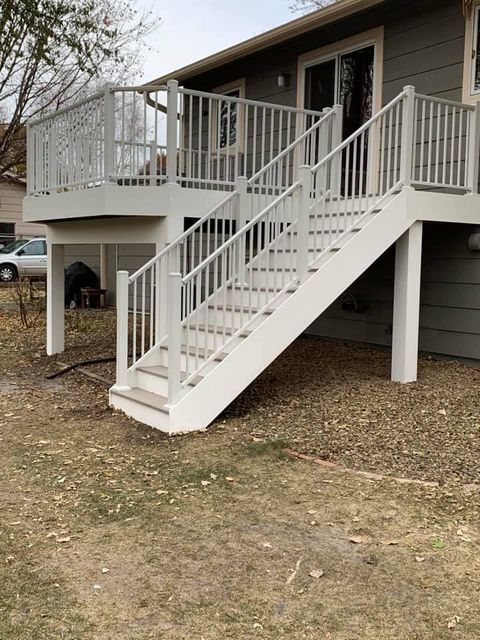Picking the Right Deck Footings for Stability and Resilience
The longevity and security of your deck depend greatly on the kind of footings you pick, as they provide the vital support and security to hold up against the test of time. In this discussion, we will check out the numerous types of deck grounds, consider the crucial aspects to evaluate when making a choice, and dive right into the pros and cons of different alternatives.
Types of Deck Grounds
There are numerous sorts of deck grounds that can be made use of, each offering unique advantages and considerations. One common kind of ground is the concrete pier ground. These footings contain a cylindrical opening full of concrete, which provides a solid foundation for the deck messages. Concrete pier grounds are fairly easy to set up and offer excellent stability, making them a preferred selection for numerous deck jobs.
These footings are set up by screwing them into the ground, which develops a safe and secure foundation for the deck. They additionally enable for very easy modification and progressing of the deck if needed.
Additionally, some home builders select precast concrete grounds. These grounds are made of durable concrete and can be found in various forms and sizes to suit different deck designs. Precast concrete grounds are hassle-free to set up and offer a secure base for the deck framework.
Ultimately, another alternative is the post-in-anchor footing system. This sort of footing includes driving a steel anchor right into the ground and attaching it to the deck message. It uses versatility in regards to placing the deck messages and appropriates for decks with light-weight structures.
When selecting the appropriate kind of deck ground, it is necessary to consider aspects such as dirt problems, deck load, and regional building ordinance (Deck Footings). Consulting with a specialist specialist or architectural engineer can assist guarantee the suitable ground is chosen for a secure and secure deck
Factors to Think About When Selecting Footings
When choosing the ideal grounds for a deck, it is vital to very carefully think about various elements such as soil problems, deck load, and adherence to neighborhood building regulations. These aspects play a considerable role in making sure the stability and longevity of the deck structure.
One of the primary factors to take into consideration is the soil problems. The kind of soil on which the deck will certainly be built figures out the kind of grounds called for. Decks built on sandy or loosened soils may require deeper footings to give adequate assistance and stop settling. On the various other hand, decks improved clay or expansive soils may call for footings that can suit the soil's propensity to expand and agreement.
An additional essential element is the deck load. The weight of the deck, consisting of the products utilized and any prospective online lots such as furniture or gatherings, should be considered when picking grounds. The grounds need to be created to bear the weight of the deck and disperse it equally to avoid any type of architectural issues or failures.
Last but not least, adherence to local structure codes is extremely important. Building regulations vary from region to area, and it is important to adhere to the details demands set by the neighborhood authorities. Deck Footings. These codes make sure that the deck is developed securely and satisfies the essential criteria for structural stability and load-bearing capacity
Concrete Footings: Benefits And Drawbacks

Concrete footings offer a number of advantages and disadvantages when made use of as the structure for a deck. On the positive side, concrete footings give exceptional security and durability.
An additional advantage of concrete grounds is their convenience. They can be put into various sizes and shapes to fit numerous deck styles and arrangements. Concrete footings can be personalized to fit the details needs and needs of the deck framework.
However, there are likewise some downsides to making use of concrete footings. This can you could look here boost the general expense of the deck project and might call for expert assistance.

Helical Piers Vs. Sonotubes: Which Is Better?
In thinking about the structure choices for a deck, the comparison between helical piers and sonotubes is important in establishing the premium choice. They are twisted into the ground making use of hydraulic equipment, giving a resilient and stable structure for the deck.
The helical plates on the piers develop a solid hold with the dirt, preventing any activity or shifting of the deck. Sonotubes, on the various other hand, count only on the concrete loading for stability, which may not use the exact same degree of strength and resistance.
In regards to installation, helical piers are relatively easier and faster to mount compared to sonotubes. The hydraulic machinery utilized to twist the piers into the ground makes sure a fast and reliable procedure. Sonotubes, on the various other hand, require discover this info here digging openings and pouring concrete, which can be time-consuming and labor-intensive.
Additionally, helical piers are an even more versatile option. They can be used in various soil problems and can be adjusted or strengthened if required. Sonotubes, on the various other hand, may require additional support, such as rebar, in certain dirt conditions or areas with high load needs.
Picking the Right Footings for Your Deck's Dimensions
For optimum architectural stability, it is important to thoroughly pick the ideal grounds that straighten with the dimensions of your deck. The dimensions of your deck, including its size, width, and elevation, play a considerable duty in determining the kind and size of footings called for.
When choosing grounds for your deck, it is essential to take into consideration the load-bearing ability of the dirt. The weight of the deck, combined with the weight of anchor any type of furniture or people on it, applies a substantial force on the footings (Deck Footings). Therefore, it is critical to pick grounds that can appropriately support this weight without sinking or moving over time.
Bigger decks with better measurements need bigger footings to supply adequate security and assistance. The form of the grounds, whether they are rounded or square, depends on the style and format of the deck.
Verdict
In conclusion, choosing the appropriate deck grounds is important for ensuring security and resilience. Factors such as the kind of grounds, the deck's measurements, and the pros and disadvantages of various options need to be taken into consideration.
These grounds consist of a round hole loaded with concrete, which offers a strong structure for the deck blog posts. Concrete pier grounds are relatively simple to mount and provide excellent stability, making them a preferred choice for many deck tasks.
Precast concrete footings are hassle-free to install and provide a secure base for the deck structure.
It provides versatility in terms of placing the deck messages and is suitable for decks with light-weight frameworks.
Concrete grounds provide several benefits and downsides when utilized as the structure for a deck.